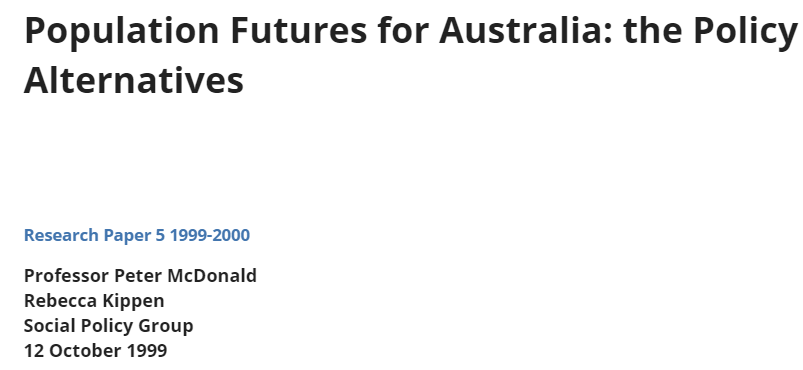“Dr Demography”, the ANU’s Dr Liz Allen, was at it again yesterday, claiming that Australia’s “optimal” immigration intake is between 160,000 and 210,000, after which Australia will suffer from diminishing returns. From News.com.au:
Liz Allen, a demographer and social researcher at the Australian National University, said the facts speak for themselves.
“The economic benefits of our migration intake are clear,” she told news.com.au. “That is, based on research, our current migration program in Australia is a demand-driven program. Evidence shows that the optimal level for Australia, given the population characteristics, is between 160,000 and 210,000.”
In other words, a migrant intake over 210,000 will produce diminishing returns, while an intake below 160,000 — as Mr Abbott is advocating for — will be ineffective for economic growth…
As I noted on Wednesday, this so-called ‘research’ claiming the “optimal level” of immigration “is between 160,000 and 210,000” comes from fellow ANU Demographer, Peter McDonald, who in 1999 co-authored a 1999 federal parliamentary research paper, entitled “Population Futures for Australia: the Policy Alternatives”:

In this 1999 paper, McDonald explicitly stated that it is “demographic nonsense to believe that immigration can help to keep our population young”, while also recommending “a population of 24-25 million within 50 years” as well as “annual net migration… in the order of 80 000“. McDonald also stated “that there were difficulties in the late 1980s when net migration rose for just two years to over 150 000 per annum” and that “a sustained net migration level of 120 000 per annum is at the high end of what Australia seems to be able to manage”.
Dr Allen needs to explain why the ANU (via Peter McDonald) has raised its “optimal level” of migration so aggressively? And why is Peter McDonald not concerned that Australia’s population has already reached his “24-25 million” target some 30-years ahead of schedule? Is it because of his alleged funding links with the ‘Growth Lobby” in favour of mass immigration (see below video).
Moreover, Dr Allen needs to explain why the ANU has ignored other evidence calling for lower levels of immigration?
For example, in 2010 Flinders University released a report to the Department of Immigration and Citizenship (DIAC) examining the “Long-Term Physical Implications of Net Overseas Migration” (NOM). This report concluded that “higher levels of NOM impose greater adverse impacts on the quality of our natural and built environments” and that the “geographical concentration… within Sydney, Melbourne and Perth… substantially increases their environmental impact”. The report also found that “decreased urban water supply is a significant environmental constraint exacerbated by higher levels of NOM”. In particular, “modelling shows the vulnerability of Sydney, Melbourne, Brisbane and Perth to deficits in water supply“.
The Flinders University report also noted that Australia’s water resources could only cope with NOM of up to 50,000 people a year (versus a permanent intake of 210,000 currently):
Only NOM levels of 50,000 pa or less result in Melbourne and Sydney maintaining a small surplus of net surface supply over demand on average out to 2050, assuming current climate conditions persist. Potential options to alleviate water stress at high NOM levels over the longer term may be hard to find.
Also in 2010, the Australian Conservation Foundation (ACF) called for Australia’s population to be stabilised and nominated human population growth as a “key threatening process” to Australia’s biodiversity.
In 1994, when Australia’s population was just under 18 million, the Australian Academy of Science (AAS) convened a symposium on the future population of Australia. Its analysis was extended to Australia’s resources of water, minerals and arable land, and the interactions between present lifestyle and present environmental damage, and between future expectations and the costs of increasing population.
The AAS cautioned that “if our population reaches the high end of the feasible range (37 million), the quality of life of all Australians will be lowered by the degradation of water, soil, energy and biological resources” and concluded that “the quality of all aspects of our children’s lives will be maximised if the population of Australia by the mid-21st Century is kept to the low, stable end of the achievable range, i.e. to approximately 23 million”.
Why is environmental sustainability being completely ignored by the Dr Liz Allen and the ANU?

